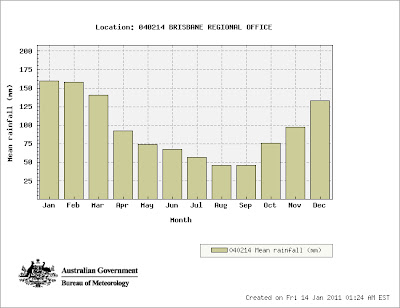 Cars sit in debris in Teresopolis, 65 kilometres north of Rio de Janeiro, on Wednesday. (Roberto Ferreira/Agencia O Dia/Associated Press)
Cars sit in debris in Teresopolis, 65 kilometres north of Rio de Janeiro, on Wednesday. (Roberto Ferreira/Agencia O Dia/Associated Press)Survivors of mudslides (click here) in mountain towns north of Rio de Janeiro recounted Thursday the horrors of watching homes swept away by walls of earth and water and of frantic efforts to dig with bare hands and reach trapped neighbours....
January 13, 2011
1219 GMT
Brazil Satellite
Janaury 13, 2011
1222 GMT
Western Hemisphere Satellite
And in Australia...
...They come seeking (click here) news of loved ones, appealing to their neighbours or friends for information, posting photos, and detailing their last known movements.
These are not official missing-person reports but two-line messages posted to sites such as Facebook and Twitter where the power of social networks is being harnessed to locate relatives and pets caught out by rising flood waters in Queensland....
The Australians and their government were worried about losing Brisbane completely.
Bligh urges caution after drain death
Queensland premier Anna Bligh warns residents of the dangers of floodwater after a 24-year-old man was swept to his death down a Brisbane drain....I would not put a great deal of faith in the telecommuications network in the area. The region maybe, but, the area where the floods exist should resort to 'tried and true' methods of emergency communications. It isn't just software, it is hardware that is in need of repair.
Coastal and lowlands.
.
A Telstra St George exchange sandbagged and wrapped in plastic
 ...Telecommunications networks (click here) in Queensland are being hammered by the floods, with several exchanges offline and more outages expected as back-up batteries run out in power-affected areas.
...Telecommunications networks (click here) in Queensland are being hammered by the floods, with several exchanges offline and more outages expected as back-up batteries run out in power-affected areas.Tens of thousands of people are without mobile, landline or internet access, despite telcos using helicopters, sandbags and plastic wrappings to protect their sites from water damage.
"We have a lot of damaged infrastructure but more importantly our biggest issue is access to power," a Telstra spokeswoman said....
Flood peaks in Brisbane
The flooded Brisbane River spills into residential areas close to the CBD. Photo: REUTERS/Tim Wimborne
..."Well over 100mm of rain (click here) had already fallen around the lake since Friday, but yesterday an incredible further 249mm fell in just 24 hours. This wall of water is now being released by the dam and is heading towards Brisbane," says Mr Duncan.
A total of 370mm of rain has fallen in the area in just five days....
The average rainfall for Brisbane over a record from 1840 - 1994 is 159.6 mm. (click here)
The mean for January is 159.6 mm and Brisbane received 370 mm in five days due to a deluge of water. It stressed its infrastructure completely and challenged its dams.
China needs to pay attention. The Three Gorges Dam has to be managed exceptionally well in this climate.
Brisbane not only had a ridiculously high amount of rainfall, it is completely unchararcteristic of the area in the last thirty years. The mean in the last thirty years in Brisbane has been well below average. Australia has been in drought conditions.
When meterologists glibbly state, "It is La Nina." WITHOUT explaining the Climate Crisis dynamics along with it, they are dead wrong.
...But according to climate researcher David Karoly (click title to entry - thank you) from the University of Melbourne, the strong La Niña isn’t solely responsible for this year’s heavy Australian rainfall. The sea surface temperatures around Australia, rather than just its northeastern region, also contribute to the rains in Queensland, he says.
“What gives very heavy rainfall is high Indian Ocean temperatures and La Niña in the Pacific,” Karoly explains. “This year we have both of those, and both are at record highs.”...







